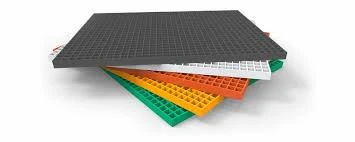
-
 Afrikaans
Afrikaans -
 Albanian
Albanian -
 Amharic
Amharic -
 Arabic
Arabic -
 Armenian
Armenian -
 Azerbaijani
Azerbaijani -
 Basque
Basque -
 Belarusian
Belarusian -
 Bengali
Bengali -
 Bosnian
Bosnian -
 Bulgarian
Bulgarian -
 Catalan
Catalan -
 Cebuano
Cebuano -
 China
China -
 China (Taiwan)
China (Taiwan) -
 Corsican
Corsican -
 Croatian
Croatian -
 Czech
Czech -
 Danish
Danish -
 Dutch
Dutch -
 English
English -
 Esperanto
Esperanto -
 Estonian
Estonian -
 Finnish
Finnish -
 French
French -
 Frisian
Frisian -
 Galician
Galician -
 Georgian
Georgian -
 German
German -
 Greek
Greek -
 Gujarati
Gujarati -
 Haitian Creole
Haitian Creole -
 hausa
hausa -
 hawaiian
hawaiian -
 Hebrew
Hebrew -
 Hindi
Hindi -
 Miao
Miao -
 Hungarian
Hungarian -
 Icelandic
Icelandic -
 igbo
igbo -
 Indonesian
Indonesian -
 irish
irish -
 Italian
Italian -
 Japanese
Japanese -
 Javanese
Javanese -
 Kannada
Kannada -
 kazakh
kazakh -
 Khmer
Khmer -
 Rwandese
Rwandese -
 Korean
Korean -
 Kurdish
Kurdish -
 Kyrgyz
Kyrgyz -
 Lao
Lao -
 Latin
Latin -
 Latvian
Latvian -
 Lithuanian
Lithuanian -
 Luxembourgish
Luxembourgish -
 Macedonian
Macedonian -
 Malgashi
Malgashi -
 Malay
Malay -
 Malayalam
Malayalam -
 Maltese
Maltese -
 Maori
Maori -
 Marathi
Marathi -
 Mongolian
Mongolian -
 Myanmar
Myanmar -
 Nepali
Nepali -
 Norwegian
Norwegian -
 Norwegian
Norwegian -
 Occitan
Occitan -
 Pashto
Pashto -
 Persian
Persian -
 Polish
Polish -
 Portuguese
Portuguese -
 Punjabi
Punjabi -
 Romanian
Romanian -
 Russian
Russian -
 Samoan
Samoan -
 Scottish Gaelic
Scottish Gaelic -
 Serbian
Serbian -
 Sesotho
Sesotho -
 Shona
Shona -
 Sindhi
Sindhi -
 Sinhala
Sinhala -
 Slovak
Slovak -
 Slovenian
Slovenian -
 Somali
Somali -
 Spanish
Spanish -
 Sundanese
Sundanese -
 Swahili
Swahili -
 Swedish
Swedish -
 Tagalog
Tagalog -
 Tajik
Tajik -
 Tamil
Tamil -
 Tatar
Tatar -
 Telugu
Telugu -
 Thai
Thai -
 Turkish
Turkish -
 Turkmen
Turkmen -
 Ukrainian
Ukrainian -
 Urdu
Urdu -
 Uighur
Uighur -
 Uzbek
Uzbek -
 Vietnamese
Vietnamese -
 Welsh
Welsh -
 Bantu
Bantu -
 Yiddish
Yiddish -
 Yoruba
Yoruba -
 Zulu
Zulu
fiberglass ducts demonstrate exceptional resistance against
The Exceptional Resistance of Fiberglass Ducts
In the realm of modern construction and industrial applications, the choice of materials is crucial for ensuring efficiency, safety, and longevity. Among the various options available, fiberglass ducts have emerged as a standout choice, demonstrating exceptional resistance against a myriad of environmental challenges. This article explores the unique properties of fiberglass ducts that contribute to their durability and effectiveness in various settings.
Fiberglass ducts are primarily made from a combination of glass fibers and resin, resulting in a lightweight, yet incredibly strong material. This construction allows them to withstand extreme temperatures, making them suitable for both hot and cold environments. Unlike traditional metal ducts, which can corrode or rust over time, fiberglass ducts are impervious to moisture, ensuring a long lifespan even in humid or wet conditions. This characteristic is particularly advantageous in applications such as wastewater treatment plants or food processing facilities, where exposure to moisture is inevitable.
Moreover, fiberglass ducts exhibit excellent resistance to chemical agents, including acids and alkalis. This property is vital in industries where duct systems may be exposed to harsh chemicals or spills, as it prevents the degradation of the duct material. As a result, facilities can maintain operational integrity without the constant need for replacements or repairs.
fiberglass ducts demonstrate exceptional resistance against

Another significant advantage of fiberglass ducts is their insulation properties. The non-porous surface of fiberglass helps minimize heat transfer, thereby reducing energy costs associated with heating and cooling systems. By maintaining optimal temperatures within the duct system, businesses can enhance the efficiency of their HVAC systems, leading to lower operational costs and improved environmental sustainability.
Furthermore, fiberglass ducts contribute to better indoor air quality. Their smooth interior surfaces reduce the accumulation of dust and debris, minimizing the risk of contamination. This is particularly crucial in environments such as hospitals or laboratories, where air quality is paramount for safety and health.
Finally, the installation of fiberglass ducts is relatively straightforward, often requiring less time and labor compared to traditional duct materials. Their lightweight nature allows for easier handling and reduces the risk of injury during installation.
In conclusion, fiberglass ducts demonstrate exceptional resistance against a range of environmental factors, including moisture, chemicals, and temperature fluctuations. Their durability, energy efficiency, and contribution to indoor air quality make them an ideal choice for various industrial applications. As industries continue to prioritize sustainability and efficiency, the use of fiberglass ducts is likely to expand, proving to be a wise investment for the future.









